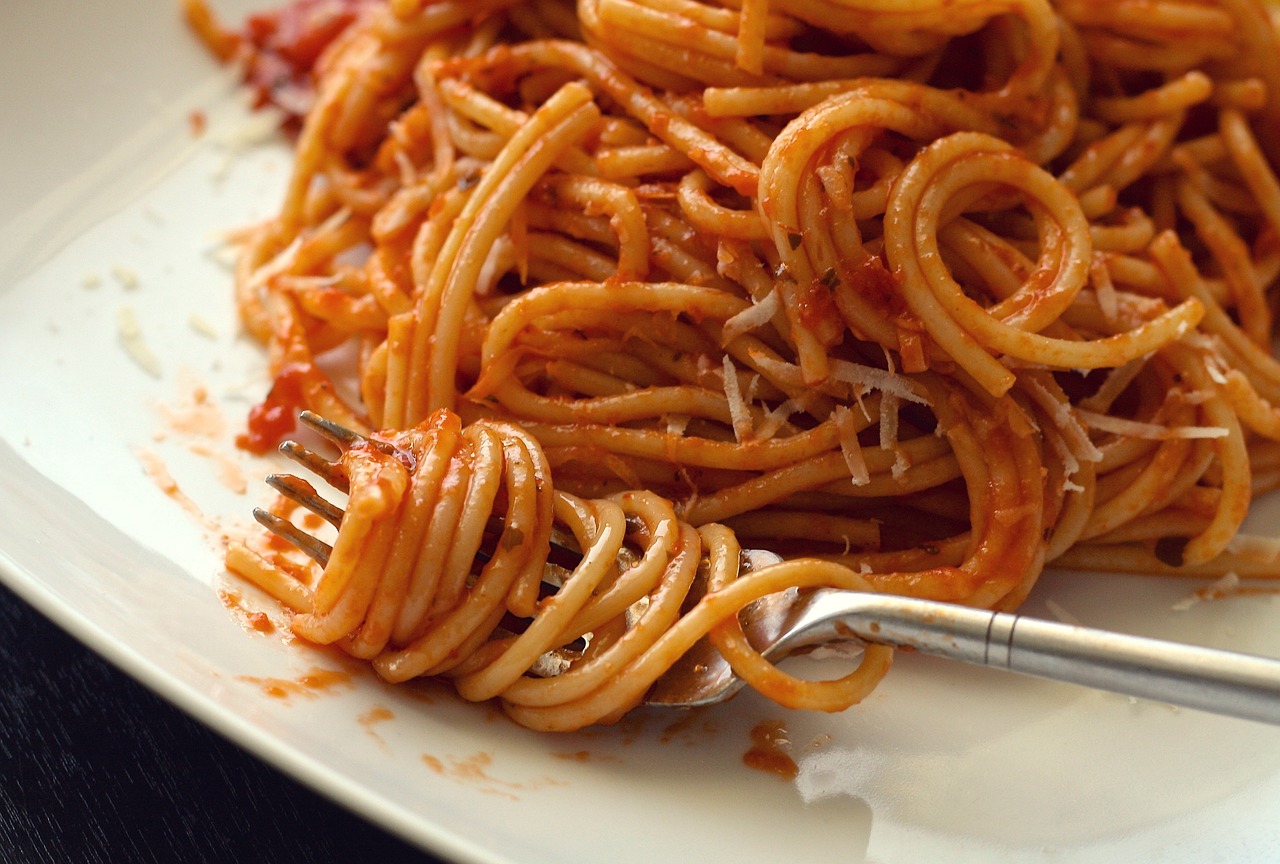
Embark on a gastronomic adventure in Rome, where every corner of the city is infused with the tantalizing aroma of freshly cooked pasta. Rome is a pasta lover’s paradise, offering a rich and diverse culinary experience that will leave your taste buds begging for more.
From the classic carbonara, with its creamy egg and pancetta sauce, to the mouthwatering cacio e pepe, a simple yet flavorful combination of pecorino cheese and black pepper, Rome is a haven for pasta enthusiasts. Each dish tells a story of tradition and passion, showcasing the unique flavors that have made Italian cuisine world-renowned.
As you wander through the charming streets of Rome, you’ll encounter trattorias and osterias that have been serving up these delectable pasta dishes for generations. The aroma of simmering sauces and freshly cooked pasta will draw you in, inviting you to experience the true essence of Roman cuisine.
Indulge in the velvety smoothness of fettuccine Alfredo, a dish that originated in Rome and has become a beloved classic worldwide. Or savor the simplicity of spaghetti aglio e olio, with its garlic-infused olive oil and fiery red pepper flakes. Each bite is a revelation, a symphony of flavors that will transport you to the heart of Italy.
So, grab a fork and prepare to embark on a culinary journey through Rome’s pasta paradise. From the first twirl of spaghetti to the last bite of lasagna, you’ll discover a world of flavors that will leave you craving for more. Join us as we explore the history, traditions, and innovations of Roman pasta, and uncover the secrets behind the dishes that have captured the hearts and palates of food lovers around the globe.
The History of Pasta in Rome
The history of pasta in Rome is a fascinating journey that dates back to ancient times. Tracing its roots to various civilizations, pasta-making techniques have been influenced by different cultures throughout history. From the Etruscans to the Greeks, each civilization left its mark on the development of pasta in Rome.
The Etruscans, an ancient civilization that inhabited central Italy, are believed to have introduced the concept of pasta to the region. They made a type of pasta called “lagane,” which was similar to the flat, wide noodles we know today. The Greeks also had an impact on pasta-making in Rome, introducing the technique of kneading dough and rolling it out with a rolling pin.
However, it was the Romans who truly embraced pasta and made it an integral part of their cuisine. They adopted the Etruscan and Greek techniques and further developed their own pasta-making methods. The Romans were known for their love of pasta, and it became a staple in their diet.
Over the centuries, pasta in Rome continued to evolve and adapt to the changing times. With the fall of the Roman Empire, pasta-making techniques were passed down through generations, preserving the traditions and flavors of Roman cuisine. Today, pasta is deeply ingrained in the culinary culture of Rome, delighting locals and visitors alike with its rich history and delicious flavors.
Traditional Roman Pasta Dishes
Embark on a culinary journey through the heart of Rome and discover the traditional pasta dishes that have become synonymous with Roman cuisine. These iconic dishes have stood the test of time and continue to delight locals and visitors alike.
One of the most famous Roman pasta dishes is fettuccine Alfredo. This creamy and indulgent dish features long, flat noodles coated in a rich sauce made from butter and Parmesan cheese. Every bite is a decadent explosion of flavor that will leave you craving more.
If you prefer something simpler yet equally delicious, try spaghetti aglio e olio. This dish is a true testament to the beauty of simplicity. It consists of spaghetti tossed with olive oil, garlic, and red pepper flakes. The result is a dish that is bursting with flavor and will leave your taste buds dancing with delight.
Another beloved Roman pasta dish is carbonara. Made with spaghetti, eggs, Pecorino Romano cheese, and pancetta or guanciale (cured pork jowl), carbonara is a true classic. The combination of creamy eggs, salty cheese, and savory pork creates a harmonious explosion of flavors that is sure to satisfy even the most discerning palate.
When in Rome, don’t miss the opportunity to try cacio e pepe. This simple yet incredibly flavorful dish features spaghetti tossed with Pecorino Romano cheese and black pepper. The result is a dish that is both creamy and peppery, a true delight for the senses.
These traditional Roman pasta dishes are just a taste of what awaits you in the pasta paradise that is Rome. Whether you’re a fan of creamy sauces or prefer something simple and flavorful, there is a pasta dish in Rome that will leave you wanting more.
Rome’s Unique Pasta Shapes
Rome’s Unique Pasta Shapes
When it comes to pasta, Rome boasts a wide array of unique shapes that are sure to delight any pasta lover. From the long and thin tonnarelli to the tube-like rigatoni, each shape serves a specific purpose in different dishes, adding texture and enhancing the overall dining experience.
One of the most iconic pasta shapes in Rome is tonnarelli, which resembles thick spaghetti. It is often paired with rich and hearty sauces, such as carbonara or cacio e pepe, allowing the sauce to cling to the pasta’s rough surface. The tube-like rigatoni, on the other hand, is perfect for capturing chunky sauces and fillings, making it a popular choice for dishes like amatriciana or stuffed pasta.
Not to be forgotten are the unique shapes like bucatini, a thick spaghetti-like pasta with a hollow center, which adds an interesting texture to dishes. Another standout is the malloreddus, a small, ridged pasta that hails from Sardinia but has found its way into Roman cuisine. Its unique shape and texture make it ideal for hearty sauces and stews.
Exploring the different pasta shapes in Rome is like embarking on a culinary adventure. Each shape has its own story and purpose, and trying them all is a delightful way to experience the diversity of Roman cuisine. Whether you prefer long and thin, tube-like, or ridged pasta, Rome offers a shape to suit every taste and sauce.
Popular Pasta Restaurants in Rome
When it comes to indulging in the best pasta in Rome, there is no shortage of options. The city is home to a plethora of renowned pasta restaurants that cater to every palate and preference. Whether you are seeking a cozy family-run trattoria or an upscale Michelin-starred establishment, Rome has it all.
For an authentic and traditional dining experience, head to one of the many family-run trattorias scattered throughout the city. These charming establishments pride themselves on serving homemade pasta dishes passed down through generations. From the classic carbonara to the rich and hearty amatriciana, you can savor the true flavors of Roman pasta in these cozy settings.
If you are looking for a more elevated dining experience, Rome offers a range of Michelin-starred pasta restaurants. These establishments are known for their innovative techniques and use of high-quality ingredients. Here, you can expect to find unique pasta creations that push the boundaries of traditional Roman cuisine.
One popular pasta restaurant in Rome is Il Pagliaccio, a Michelin three-star restaurant that combines traditional Italian flavors with modern culinary techniques. Another top choice is Felice a Testaccio, a family-run trattoria that has been serving up delicious pasta dishes since 1936.
Whether you choose to dine in a family-run trattoria or a Michelin-starred establishment, exploring the pasta restaurants of Rome is a culinary adventure not to be missed. Each bite will transport you to pasta paradise, allowing you to savor the authentic flavors and experience the rich culinary heritage of this incredible city.
Regional Variations of Roman Pasta
When it comes to pasta in Rome, there is a world of flavors and variations to explore. Each neighborhood in the city has its own unique spin on traditional pasta dishes, offering a culinary journey through the diverse tastes of Rome.
In the Testaccio neighborhood, known for its hearty and robust flavors, you’ll find pasta dishes that are rich in both taste and history. Testaccio is famous for its traditional Roman cuisine, and its pasta creations reflect the neighborhood’s working-class roots. From the bold flavors of the iconic pasta alla gricia, made with guanciale (cured pork cheek) and pecorino cheese, to the indulgent rigatoni con la pajata, a dish made with the intestines of a milk-fed calf, Testaccio’s pasta dishes are a true reflection of the neighborhood’s culinary heritage.
On the other end of the spectrum, the Jewish Ghetto offers a more delicate and refined take on Roman pasta. The Jewish community in Rome has a long history and has greatly influenced the city’s culinary scene. In the Jewish Ghetto, you’ll find pasta dishes that are elegant and full of flavor, often incorporating ingredients like artichokes, anchovies, and raisins. One must-try dish is the classic carciofi alla giudia, which features deep-fried artichokes that are crispy on the outside and tender on the inside. The Jewish Ghetto’s pasta creations are a testament to the community’s traditions and the harmonious blend of flavors that make their dishes truly unique.
By exploring the regional variations of pasta dishes within Rome itself, you’ll not only satisfy your taste buds but also gain a deeper understanding of the city’s rich culinary history. From the hearty and robust flavors of Testaccio to the delicate and refined dishes of the Jewish Ghetto, each area brings its own distinct character and charm to the world of Roman pasta.
Modern Innovations in Roman Pasta
Modern Innovations in Roman Pasta
Experience the exciting world of modern Roman pasta as chefs in Rome push the boundaries of traditional pasta dishes. These culinary innovators are constantly experimenting with creative ingredient combinations and innovative cooking techniques, resulting in a fascinating evolution of pasta.
One of the ways chefs are reinventing Roman pasta is through the use of unique and unexpected ingredients. They are incorporating elements like truffles, saffron, and even seafood into traditional pasta recipes, creating new flavor profiles that surprise and delight the taste buds. These creative ingredient combinations add depth and complexity to classic dishes, elevating them to new heights.
In addition to experimenting with ingredients, chefs in Rome are also exploring innovative cooking techniques. They are using modern equipment and methods to achieve perfect al dente textures and enhance the overall dining experience. From sous vide cooking to molecular gastronomy, these contemporary culinary masters are pushing the boundaries of what is possible with pasta.
By embracing modern innovations, chefs in Rome are not only preserving the rich pasta traditions of the city but also breathing new life into them. They are reinventing old favorites while staying true to the essence of Roman cuisine. The result is a tantalizing fusion of tradition and innovation that promises to surprise and impress even the most discerning pasta connoisseurs.
Exploring Rome’s Pasta Culture
Immerse yourself in the vibrant pasta culture of Rome by visiting local markets, attending cooking classes, and experiencing pasta-centric events. In the bustling markets of Rome, you’ll find a wide variety of fresh pasta, made with love and care by local artisans. From the colorful stalls of Campo de’ Fiori to the historic Testaccio Market, these vibrant hubs of culinary activity offer a sensory feast for pasta enthusiasts.
For those who want to take their love for pasta to the next level, attending a cooking class in Rome is a must. Learn the art of pasta-making from expert chefs who will guide you through the process of creating traditional Roman dishes from scratch. From kneading the dough to shaping the pasta, you’ll gain hands-on experience and a deeper understanding of the techniques that make Roman pasta so special.
Pasta-centric events are also a highlight of Rome’s culinary calendar. From food festivals dedicated to all things pasta to special tasting menus at renowned restaurants, these events showcase the diversity and creativity of Roman pasta culture. Whether you’re indulging in a plate of perfectly cooked carbonara or sampling innovative pasta dishes with unexpected flavor combinations, you’ll be amazed by the passion and pride that Romans have for their pasta traditions.
By immersing yourself in Rome’s pasta culture, you’ll not only satisfy your taste buds but also gain a deeper appreciation for the artistry and craftsmanship behind this beloved culinary tradition. From the humble origins of pasta to its evolution into a symbol of Italian cuisine, every bite tells a story. So, grab a fork, savor the flavors, and embark on a pasta-filled adventure through the streets of Rome.
Frequently Asked Questions
- What is the history of pasta in Rome?
The history of pasta in Rome dates back to ancient times, influenced by various civilizations. It has evolved over centuries to become an integral part of Roman cuisine.
- What are some traditional Roman pasta dishes?
Some traditional Roman pasta dishes include fettuccine Alfredo, spaghetti aglio e olio, carbonara, cacio e pepe, and many more. These dishes showcase the rich flavors and simplicity of Roman cuisine.
- What are some unique pasta shapes found in Rome?
Rome boasts a variety of unique pasta shapes, such as tonnarelli, rigatoni, bucatini, and gnocchi. Each shape adds texture and enhances the overall dining experience.
- Which are the popular pasta restaurants in Rome?
There are numerous pasta restaurants in Rome, ranging from family-run trattorias to Michelin-starred establishments. Some popular ones include Trattoria da Danilo, Roscioli, and Felice a Testaccio.
- Are there regional variations of pasta dishes in Rome?
Yes, Rome has regional variations of pasta dishes. The Testaccio neighborhood offers hearty and robust flavors, while the Jewish Ghetto presents delicate and refined dishes.
- How is modern innovation influencing Roman pasta?
Chefs in Rome are bringing modern twists and innovations to traditional pasta dishes. They experiment with ingredient combinations and cooking techniques, pushing the boundaries of pasta cuisine.
- How can I explore Rome’s pasta culture?
To immerse yourself in Rome’s pasta culture, visit local markets, attend cooking classes, and experience pasta-centric events. These activities will deepen your appreciation for Roman pasta traditions.








